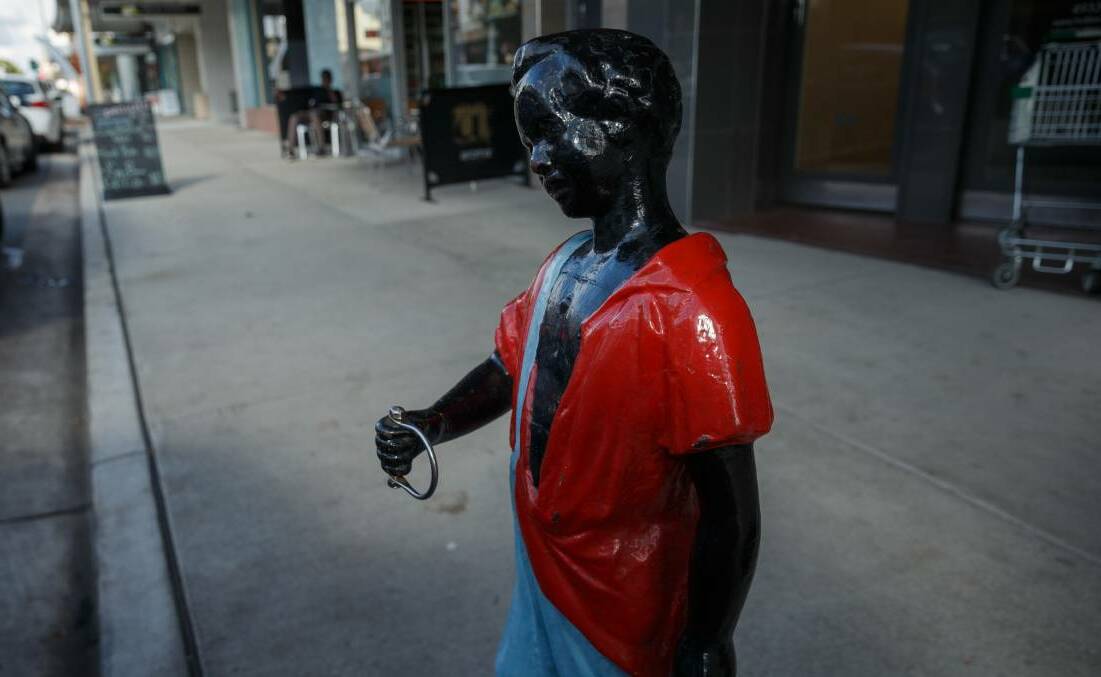
THE proposed heritage listing of a statue of a 12-year-old African American boy called Jocko Graves in Maitland's High Street is an insult, says Scott Franks of the Plains Clans of the Wonnarua People.
The idea, which belongs to Maitland City Council Deputy Mayor Mitchell Griffin, is slated for debate at tonight's council meeting.
Councillor Griffin said the statue, formerly known as the "Little Black Boy", has stood at the corner of High and Church Streets "for the best part of 150 years".
"There are not many people in Maitland who as children haven't gone and hugged the statue and really have fond memories with it," Cr Griffin said.
"Going back to WWII, there were soldiers who would go and dress it warm at night time, we've had football teams paint it in all different colours, it's really been a central point for the community for many years that statue.
"And like many things across our city, our buildings and there are other monuments that are heritage listed, and this is one of the few that we don't have heritage listed that really should be."
The statue is a replica of the lawn jockey statues seen in the United States, and depicts a boy who was the son of a freed African who fought within the regiment led by George Washington in 1776. Legend has it, the boy wanted to fight alongside his father in George Washington's army but was too young.
He decided to go anyway, and was given the role of holding the horses while the army crossed the Delaware River. The night was so cold that Jocko was found frozen to death, still holding the tethered horses.
"Washington was so touched by Grave's dedication to service he had a monument cast of Graves to be placed on his estate at Mount Vernon," a report attached to Cr Griffin's notice of motion says. "It is this monument on which Maitland's Jocko Graves Statue is based."
It was used as a horse hitching post. It originally came to town as a gift to MacDonald's Tobacconist on High Street.
Mr Franks said that to consider heritage listing that statue ahead of other items of historical significance to Maitland was "ludicrous".
"I am just shocked," Mr Franks said.
"When there's so much First Nations history that they choose to ignore ... it's just insulting, in all honesty, to recognise an African nego, which is exactly what it is, above sites and items of significance to the Wonnarua people ... it's an absolutely ludicrous position for a council to take.
"There is so much fantastic First Nations culture around the Lower Hunter that's just being looked over. How do they get to even putting a motion up without consulting the community."
Cr Griffin has tabled a notice of motion for the statue to be included as a Heritage Item under the Maitland Local Environment Plan. Ultimately, the community would get a chance to have their say if the council decided to proceed with a change to the LEP.
His proposal includes for signage to be located alongside the statue to provide historical context and to tell the story behind it.
"That's one of the bonuses from the motion tonight, is that we are actually proposing to put signage up to tell about the background, so people can be informed," Cr Griffin said.
"It is not a symbol of racism or oppression as some have previously thought, but a story of honour and duty which needs to be remembered for future citizens of this city," Cr Griffin says in his notice of motion.
"Therefore, to prevent any future misunderstandings and confusion around the statue, council should look into the erection of interpretive signage next to the monument ...".







